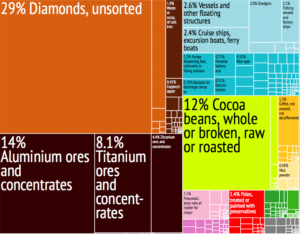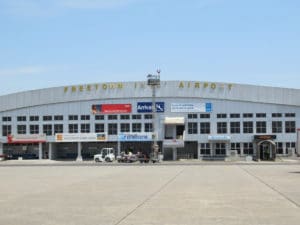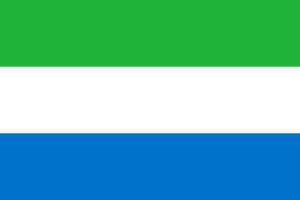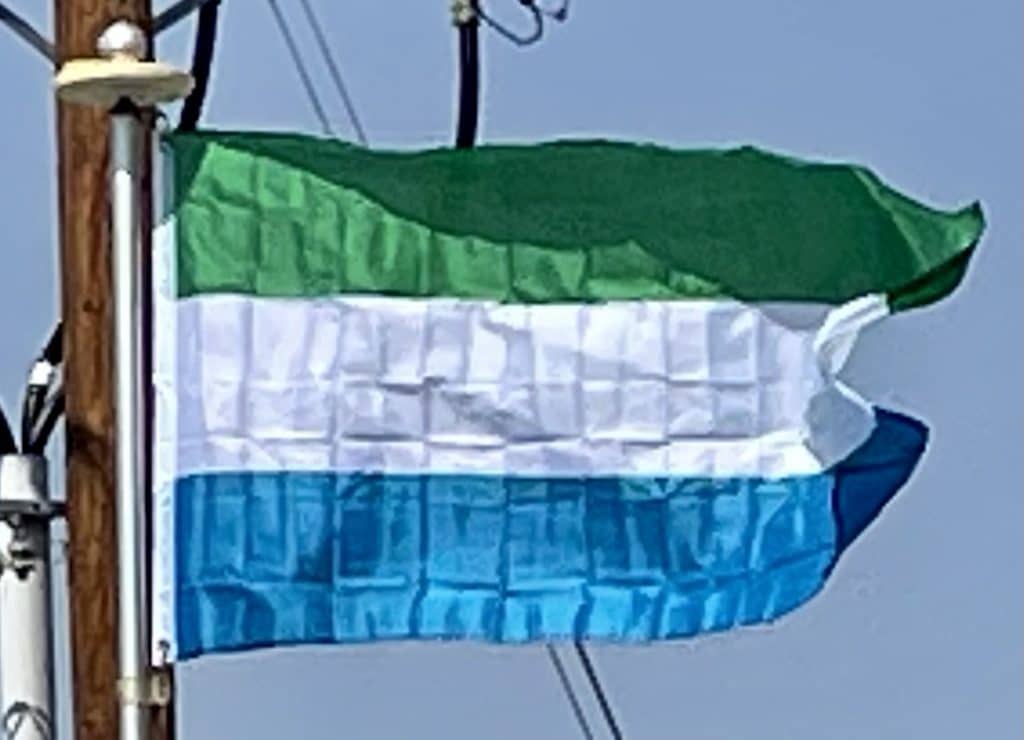Much of the recovery will depend on the success of the government’s efforts to limit corruption by officials, which many feel was the chief cause of the civil war. A key indicator of success will be the effectiveness of government management of its diamond sector.
There is high unemployment, particularly among the youth and ex-combatants.
Two-thirds of the population of Sierra Leone are directly involved in subsistence agriculture. Agriculture accounted for 58 per cent of gross domestic product (GDP) in 2007.

Agriculture is the largest employer with 80 per cent of the population working in the sector. Rice is the most important staple crop in Sierra Leone.
Rich in minerals, Sierra Leone has relied on mining, especially diamonds, for its economic base. The country is among the top ten diamond producing nations. Mineral exports remain the main currency earner. Sierra Leone is a major producer of gem-quality diamonds. Though rich in diamonds, it has historically struggled to manage their exploitation and export.
Sierra Leone has one of the world’s largest deposits of rutile, a titanium ore used as paint pigment and welding rod coatings.
Transportation:
There are several systems of transport in Sierra Leone, which has a road, air and water infrastructure, including a network of highways and several airports. There are 11,300 kilometers (7,000 miles) of highways in Sierra Leone, of which 904 km (562 mi) are paved (about 8% of the roads). Sierra Leone’s highways are linked to Conakry, Guinea, and Monrovia, Liberia.
Sierra Leone has the largest natural harbor on the African continent, allowing international shipping through the Queen Elizabeth II Quay in the Cline Town area of eastern Freetown or through Government Wharf in central Freetown. There are 800 km (497 mi) of waterways in Sierra Leone, of which 600 km (373 mi) are navigable year-round. Major port cities are Bonthe, Freetown, Sherbro Island and Pepel.

There are ten regional airports in Sierra Leone, and one international airport. The Lungi International Airport located in the coastal town of Lungi in Northern Sierra Leone is the primary airport for domestic and international travel to or from Sierra Leone. Passengers cross the river to Aberdeen Heliports in Freetown by hovercraft, ferry or a helicopter.
As of May 2014, the country’s only international airport had regularly scheduled direct flights to London, Paris, Brussels and most major cities in West Africa.
Flag of Sierra Leone:
The national flag of Sierra Leone is a tricolor consisting of three horizontal green, white and blue bands. It was adopted in 1961, Sierra Leone’s independence year, to replace the British Blue Ensign defaced with the arms of the Crown Colony of Sierra Leone.

The colors of the flag carry cultural, political, and regional meanings. The green alludes to the country’s natural resources – specifically agriculture and its mountains. The white epitomizes “unity and justice”. The blue evokes the “natural harbor” of Freetown, the capital city of Sierra Leone, as well as the hope of “contributing to world peace” through its usage.
